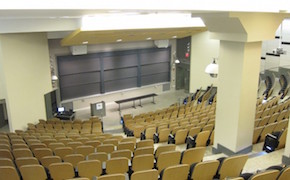Instructor Insights pages are part of the OCW Educator initiative, which seeks to enhance the value of OCW for educators.
Course Overview
This page focuses on the course 15.S21 Nuts and Bolts of New Ventures/Business Plans as it was taught by Joseph Hadzima and Joost Bonsen in IAP 2014.
This course explores the nuts and bolts of preparing a business plan and starting a new venture, and is open to members of the MIT community and to others interested in entrepreneurship. It is particularly recommended for persons who are interested in starting or are involved in a new business or venture. Because some of the speakers are judges of the MIT $100K Entrepreneurship Competition, persons who are planning to enter the competition should find the course particularly useful.
January 2014 was the twenty-fifth anniversary of this course.
Course Outcomes
Course Goals for Students
For people who have never taken a course in entrepreneurship, the goal is to learn how to go about conceptualizing and starting a company.
For people who are ready to start new ventures, the goal is to give them the set of tools needed to conceptualize their companies and to put their teams together. We want them to catch the entrepreneurial virus!
Possibilities for Further Study/Careers
Participants in this course often go on to enter the MIT $100K Entrepreneurship Competition.
Why do we keep doing this? Because I get emails, five and ten years after participants have taken the course from people saying, ‘I started a company, and I remembered something from the course.’ There’s some enduring value here.
—Joseph Hadzima
Below, Joseph Hadzima describes various aspects of how he teaches 15.S21 Nuts and Bolts of New Ventures/Business Plans.
Curriculum Information
Prerequisites
Permission of the Instructor
Requirements Satisfied
None
Offered
Every IAP
Assessment
MIT students may take this course for 3 units of Pass/Fail credit. Attendance at each session is required and the writing requirement must be fulfilled.
Student Information

Breakdown by Year
This is a graduate-level course.
Breakdown by Major
Typically, students from the Schools of Engineering, Science, Architecture and Planning comprise 50% of the class, while students from the Sloan School of Management make up the remaining 50%.
During an average week, students were expected to spend 21 hours on the course, roughly divided as follows:
In Class
- Met 3 times per week for 3 hours per session; 6 sessions total; mandatory attendance.
- Sessions featured experts from the field who spoke about different aspects of business plans and new ventures.
Out of Class
Semester Breakdown
| WEEK | M | T | W | Th | F |
|---|---|---|---|---|---|
| 1 |  |  |  |  |  |
| 2 |  |  |  |  |  |
| 3 |  |  |  |  |  |
| 4 |  |  |  |  |  |
 No classes throughout MIT
No classes throughout MIT Lecture session
Lecture session No class session scheduled
No class session scheduled Recitation session
Recitation session


 Room 1 of 1
Room 1 of 1 